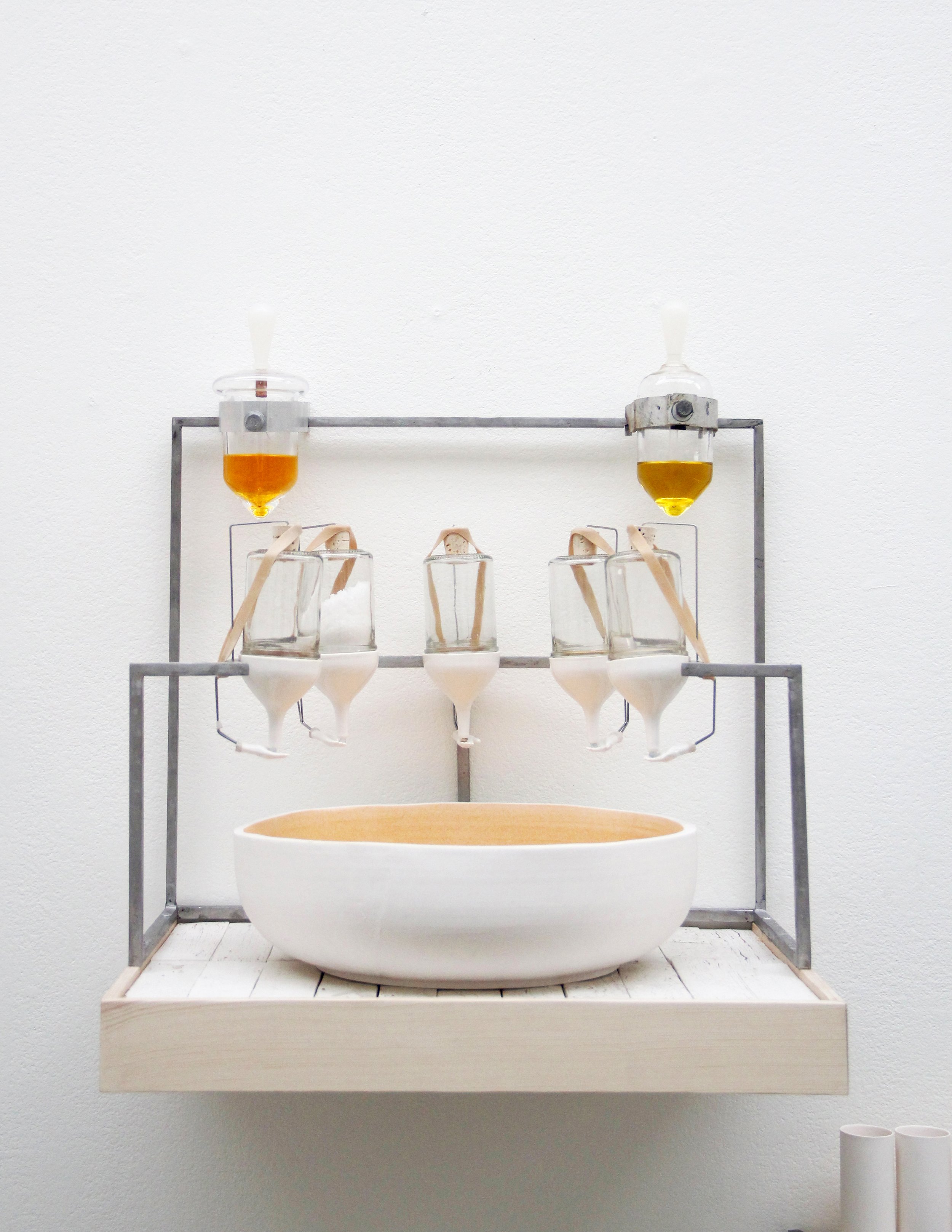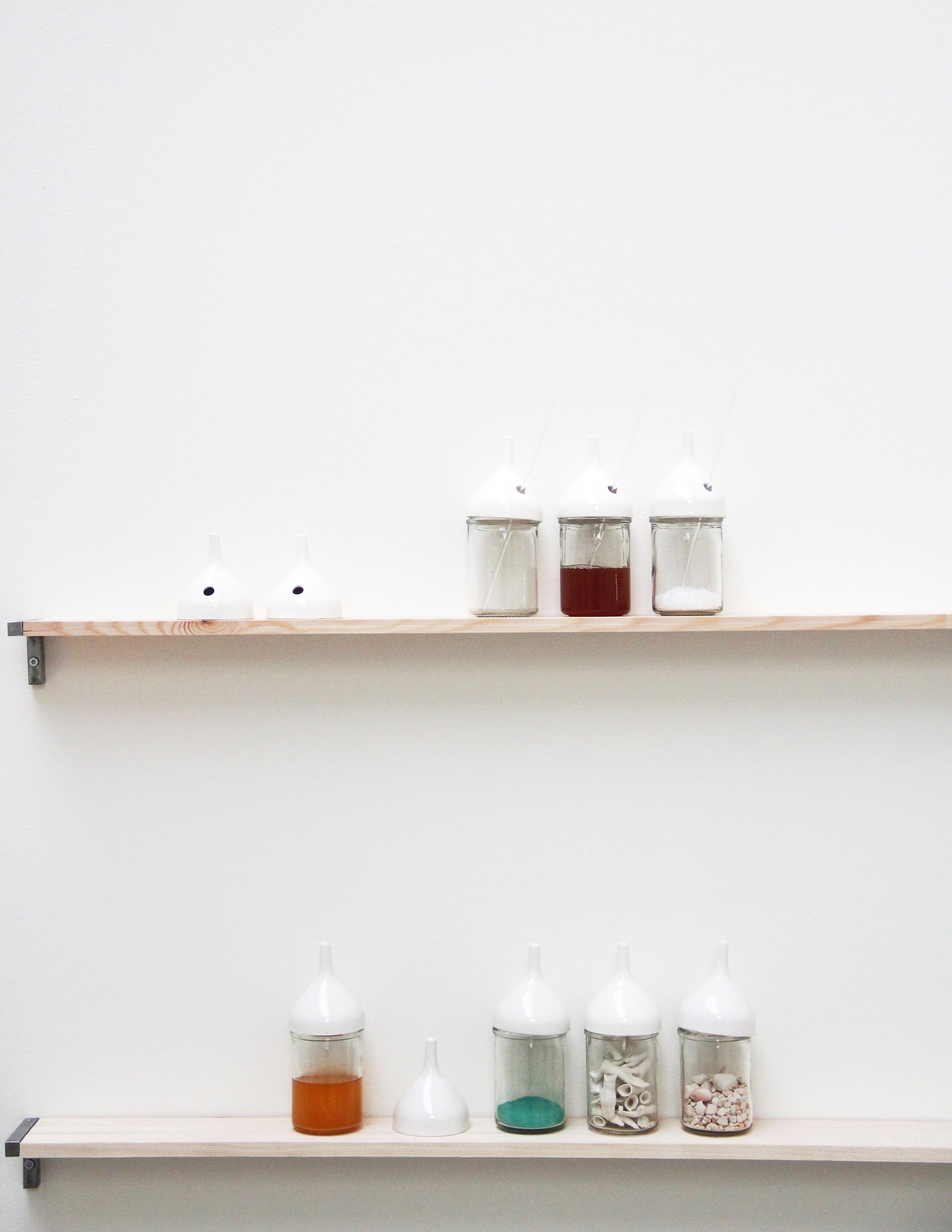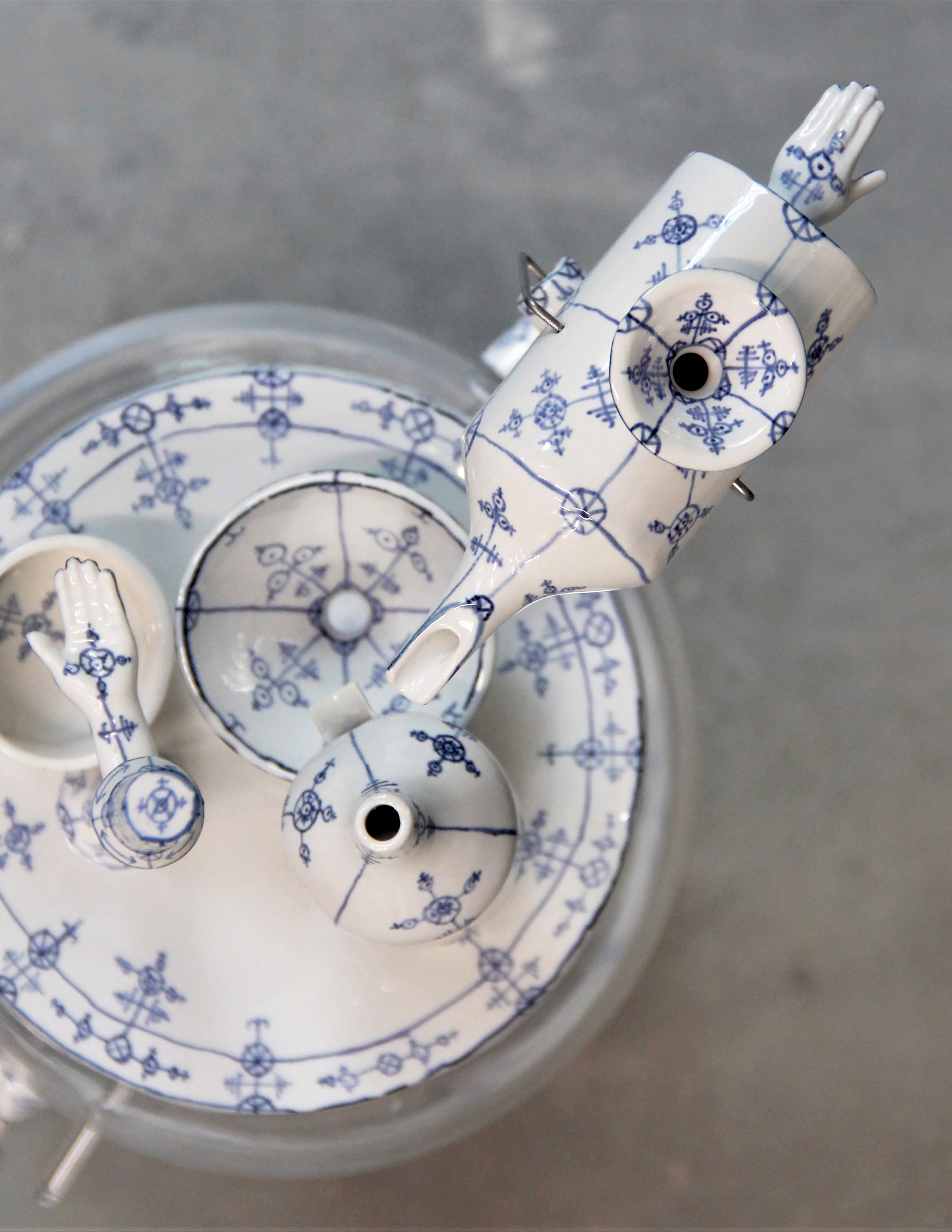
A Laboratory
Stockholm, Sweden / 2020 - 2021
The first recipe for European porcelain was discovered in the context of alchemical investigations.
With a nearly thousand-year-old tradition in China and Korea, wealthy Western collectors of White Gold could only pay for and wonder about this material miracle until the early 18th century. Augustus the Strong, Elector of Saxony, King of Poland and Grand Duke of Lithuania, suffered from what he called Porcelain Sickness, to name his love and addiction to the material. He had to sell parts of his army to afford more white gold from Asia. Greedy (and poor at some point), he imprisoned the young alchemist Johann Friedrich Böttger with the assignment to create gold for his shopping. As the creational act remained unsuccessful, Augustus changed the research objective and wanted to have porcelain straight away.
With the help of mathematician and physicist Ehrenfried Walther von Tschirnhaus, he fired the first European-made porcelain in 1708. The recipe moved from Dresden to Meissen, Germany, while Böttger had to stay in prison and return to gold-making. A big story in a nutshell.
Porcelain, Metal, Wood, Electronics, div. Minerals and Liquids
The collaboration between von Tschirnhaus and Böttger beautifully illustrates the two facets of porcelain: science and magic. Alchemy beautifully illustrates the basic human condition of restless striving for the idea ofenlightenment by transforming cheap matter into a noble substance—internal and external, intangible and material. From weak flesh to the superhuman, from mud to gold. Another big story in a nutshell.
My Master’s installation A Laboratory (original title Investigations into Enlightenment) is the result of a project that aimed to dig in dirt—literally and metaphorically. As always. It unites three narrative threads under the cloak of alchemy: Mineralia Humunculus is a material-research series that transforms two personally relevant, raw geological resources into ceramic material and back into artificially recreated mountains. The Ikarus Collection is three small installations that make bird wings move in circles around burned-out light sources. Objects 1 - 7 are interview-based interpretations of contemporary gold. Materialized in porcelain, they tell stories of rituals, silence, honey, trust and comfort, and a hand in the ocean. You name it.
It is a laboratory.
And now permanently installed in the University Hospital, Uppsala, Sweden












